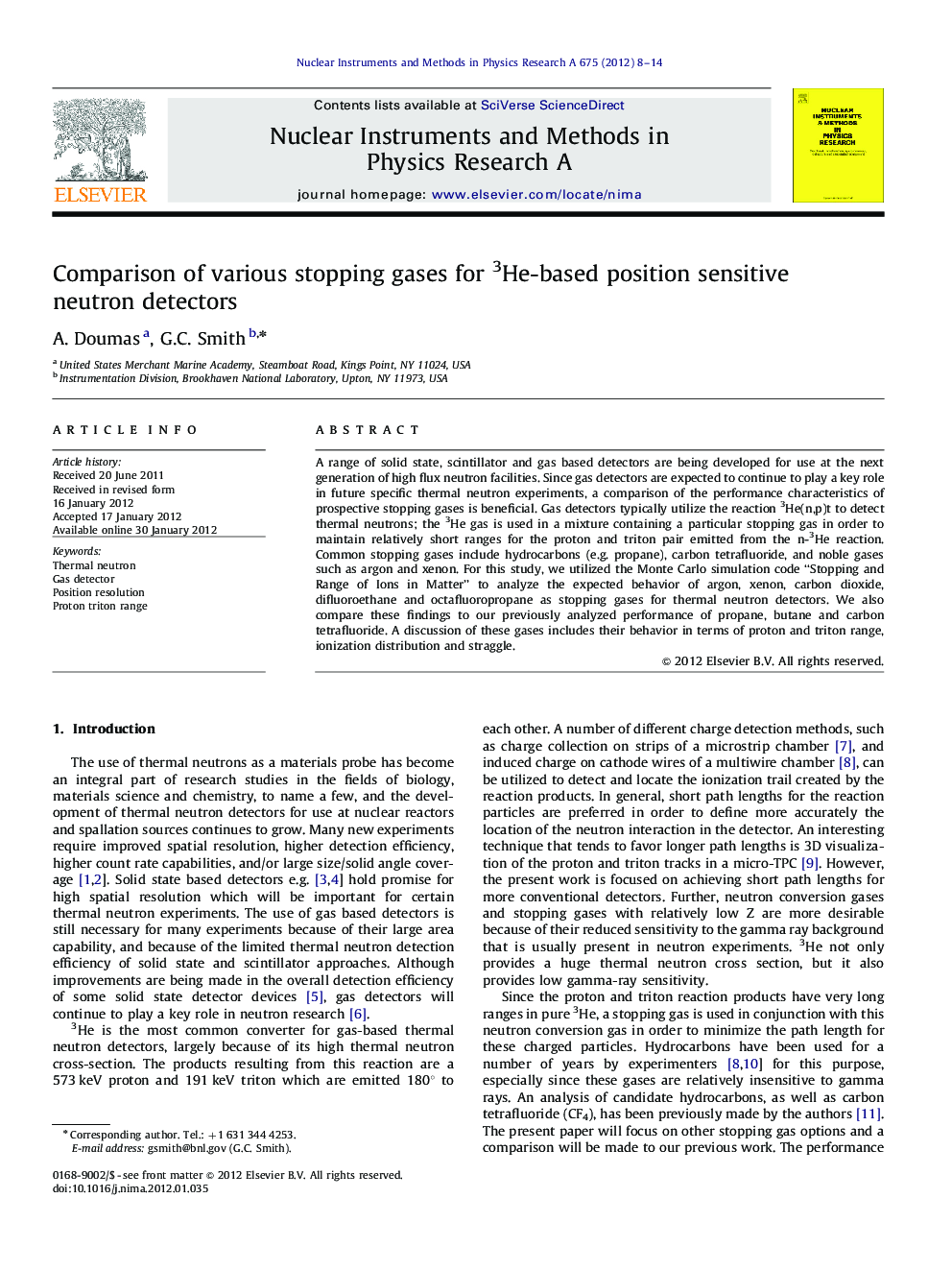| Article ID | Journal | Published Year | Pages | File Type |
|---|---|---|---|---|
| 1823783 | Nuclear Instruments and Methods in Physics Research Section A: Accelerators, Spectrometers, Detectors and Associated Equipment | 2012 | 7 Pages |
A range of solid state, scintillator and gas based detectors are being developed for use at the next generation of high flux neutron facilities. Since gas detectors are expected to continue to play a key role in future specific thermal neutron experiments, a comparison of the performance characteristics of prospective stopping gases is beneficial. Gas detectors typically utilize the reaction 3He(n,p)t to detect thermal neutrons; the 3He gas is used in a mixture containing a particular stopping gas in order to maintain relatively short ranges for the proton and triton pair emitted from the n-3He reaction. Common stopping gases include hydrocarbons (e.g. propane), carbon tetrafluoride, and noble gases such as argon and xenon. For this study, we utilized the Monte Carlo simulation code “Stopping and Range of Ions in Matter” to analyze the expected behavior of argon, xenon, carbon dioxide, difluoroethane and octafluoropropane as stopping gases for thermal neutron detectors. We also compare these findings to our previously analyzed performance of propane, butane and carbon tetrafluoride. A discussion of these gases includes their behavior in terms of proton and triton range, ionization distribution and straggle.
